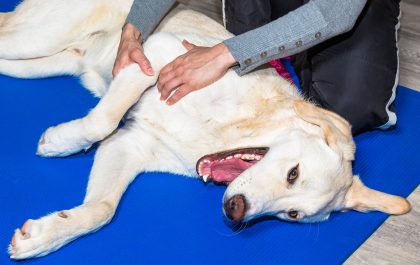What is heatstroke in cats?
Causes and risk factors of heatstroke in cats
Heatstroke is a serious health condition that can affect cats, and can even be fatal if not treated promptly. It is important for cat owners to be aware of the causes and risk factors of heatstroke in cats, so that they can take the necessary steps to prevent it.
One of the most common causes of heatstroke in cats is being left in a hot environment, such as a car, for too long. Cats are unable to sweat, so they are unable to cool themselves down in hot environments. Other causes of heatstroke in cats include strenuous activity in hot weather, and being left in direct sunlight.
There are certain risk factors that can increase the likelihood of a cat developing heatstroke. These include being overweight, having a thick coat, being elderly, or having a medical condition such as heart disease. Cats that live in warmer climates are also more likely to develop heatstroke, as are cats that are not used to being outdoors. Owners should also be aware of the signs of heatstroke in cats, such as panting, drooling, vomiting, and lethargy.
Signs and symptoms of heatstroke in cats
Heatstroke is a serious condition that can be fatal for cats, so it’s important to be aware of the signs and symptoms. Heatstroke in cats is caused by prolonged exposure to high temperatures, and can occur quickly in hot weather. Heatstroke can also occur if a cat is left in a parked car, or is unable to find a cool place to rest.
The most common signs and symptoms of heatstroke in cats include panting, drooling, vomiting, diarrhoea, lethargy, weakness, confusion, and collapse. Cats may also become unsteady on their feet, and may display signs of distress such as agitation or restlessness. If a cat is displaying any of these symptoms, it is important to take them to a vet as soon as possible. Heatstroke can cause serious damage to the organs, and can be fatal if left untreated. To prevent heatstroke in cats, it is important to provide them with a cool, shady place to rest, and to monitor them in hot weather.
How to prevent heatstroke in cats
Heatstroke in cats can be a serious and potentially fatal condition. It is important to be aware of the signs and symptoms of heatstroke, as well as how to prevent it.
The most important way to prevent heatstroke in cats is to ensure they have access to a cool, shaded area and plenty of fresh water at all times. Cats should never be left in a car, even with the windows open, as the temperature can quickly become too hot for them. If the temperature outside is above 25’C, it is best to keep cats indoors with access to a fan or air conditioning. It is also important to make sure cats have access to a cool surface to lie on, such as a tile floor.
Regular grooming is also important in preventing heatstroke, as it helps to keep cats cool and remove excess fur. If cats have long fur, it is a good idea to get them clipped during the summer months. Exercise should also be kept to a minimum during hot weather, as cats can quickly overheat. It is also important to be aware of any underlying health conditions that may increase the risk of heatstroke, such as obesity or heart disease.
Treatment options for cats with heatstroke
Heatstroke is a serious condition that can be fatal for cats if not treated quickly. Fortunately, there are a number of treatment options available for cats who suffer from heatstroke.
The first step in treating heatstroke in cats is to lower the cat’s body temperature. This can be done by immersing the cat in cool water, or by applying cool, wet towels to the cat’s body. It is important to ensure that the water is not too cold, as this can cause further stress to the cat. If the cat is conscious, it can also be given small amounts of cool water to drink. It is important to seek veterinary attention as soon as possible, as the cat may need intravenous fluids to prevent dehydration.
Once the cat’s body temperature has been lowered, the underlying cause of the heatstroke should be addressed. If the cat is suffering from a medical condition such as an infection, this should be treated with antibiotics. If the cat has been exposed to extreme temperatures for a prolonged period of time, it is important to ensure that the cat is kept in a cool, well-ventilated environment. It is also important to ensure that the cat is provided with plenty of fresh water to drink. In some cases, it may be necessary to provide the cat with additional cooling measures such
When to seek veterinary care for a cat with heatstroke
Heatstroke is a serious medical condition that can affect cats, and it is important to know when to seek veterinary care for a cat with heatstroke. Heatstroke occurs when a cat is exposed to high temperatures for an extended period of time and their body is unable to regulate its temperature. Left untreated, heatstroke can be fatal.
If a cat is showing signs of heatstroke, such as excessive panting, drooling, weakness, vomiting, or even collapse, it is important to seek veterinary care as soon as possible. It is also important to cool the cat down as quickly as possible by moving them to a cooler environment and using wet towels or a fan to cool them down. Once the cat is cooled down, they should be taken to the vet for further treatment. The vet may recommend fluids to help rehydrate the cat, and they may also recommend antibiotics to prevent infection. It is important to follow the vet’s instructions and monitor the cat’s condition to ensure they make a full recovery.
Long-term effects and complications of heatstroke in cats
Long-term effects and complications of heatstroke in cats can be severe and have far-reaching consequences. Heatstroke can cause permanent organ damage, especially to the kidneys and liver, resulting in long-term health issues. In addition, cats that have suffered from heatstroke may be more prone to developing chronic conditions such as kidney disease, liver disease, and diabetes.
Heatstroke can also cause neurological damage, resulting in behavioural changes and cognitive decline. Cats may experience confusion, disorientation, and memory loss. In extreme cases, cats may experience seizures, coma, or even death. Long-term effects of heatstroke can also include dehydration, electrolyte imbalances, and anemia. All of these conditions can have serious implications on the health and wellbeing of cats and should be monitored closely by a veterinarian.
Importance of educating pet owners about heatstroke in cats
It is important for pet owners to be educated about the risks of heatstroke in cats. Cats are particularly susceptible to heatstroke due to their inability to sweat, and can suffer serious health consequences if not treated promptly. Education on the signs and symptoms of heatstroke, as well as preventive measures, is essential for cat owners to ensure their pet’s safety and wellbeing.
Pet owners should be aware of the environmental conditions that can lead to heatstroke in cats, such as hot, humid weather, being confined in a hot area, or being left in a car on a hot day. They should also be aware of the signs and symptoms of heatstroke, such as heavy panting, drooling, rapid heart rate, vomiting, and lethargy. By educating pet owners on these risks and signs, they can act quickly to prevent serious health complications, and even death, from heatstroke in cats.
Final Thoughts
Heatstroke in cats is a serious and potentially fatal condition that should not be taken lightly. It is important for pet owners to be aware of the causes and risk factors of heatstroke, as well as the signs and symptoms of the condition. Pet owners should also take steps to prevent heatstroke in cats, such as providing them with a cool, shaded area and plenty of fresh water, and monitoring them in hot weather. If a cat does suffer from heatstroke, it is important to seek veterinary attention as soon as possible, as the condition can be fatal if left untreated. Educating pet owners about heatstroke in cats is essential in order to ensure the health and safety of cats.
Heatstroke in Cats FAQs
Yes, cats with pre-existing medical conditions, overweight cats, and senior cats are more at risk for heatstroke than healthy, younger cats.
Yes, heatstroke can be fatal in cats if not treated promptly.
No, there is no medication that can prevent heatstroke in cats. Prevention is the key to keeping your cat safe.
You can prevent heatstroke in your cat by keeping your cat indoors during the hottest parts of the day, providing plenty of shade and fresh water, and never leaving your cat in a parked car.
The recovery time for heatstroke in cats depends on the severity of the condition. Mild cases may recover within a few hours, while severe cases may take several days to recover.
Signs of heatstroke in cats include panting, drooling, rapid heartbeat, lethargy, vomiting, diarrhea, and collapse. In severe cases, seizures and coma can occur.
If heatstroke in cats is left untreated, it can lead to organ damage, seizures, coma, and death. It is important to seek treatment immediately if you suspect your cat has heatstroke.
Heatstroke in cats is a condition that occurs when a cat’s body temperature rises above the normal range. This can happen when a cat is exposed to high temperatures and/or humidity and is unable to regulate its body temperature.
Treatment for heatstroke in cats includes cooling the cat down with cool water, providing fluids and electrolytes, and monitoring the cat for complications. In severe cases, hospitalization may be necessary.
If you suspect your cat has heatstroke, move your cat to a cooler area, wet your cat down with cool water, and contact your veterinarian immediately.




